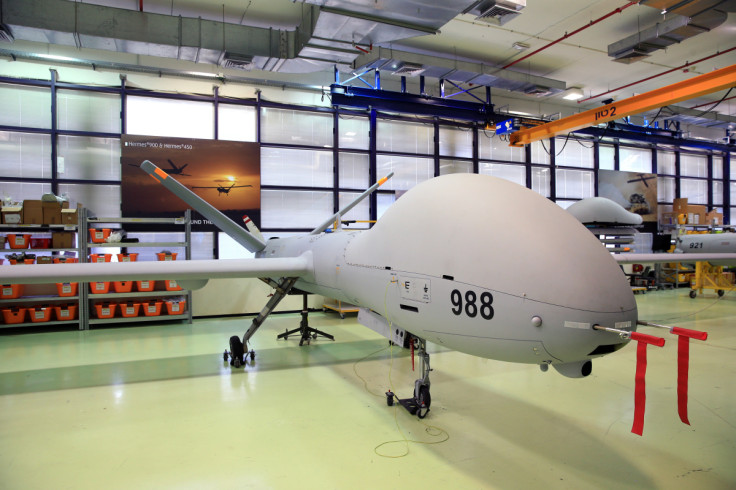Israeli Drones Use Free-falling Bombs, Can Carry Up To A Tonne

Israeli armed drones use gravity bombs that produce no noise or smoke as they fall, making them hard for enemies to anticipate or evade, and the largest model of the aircraft can carry up to a tonne of munitions, the military says.
After more than two decades of secrecy, Israel in July went public with the existence of armed drones in its arsenal. In November, an Israeli general detailed the two corps - air force and artillery - that operate the systems in combat.
Such drones are remote-piloted, dropping bombs or carrying out surveillance before returning to base. They are distinct from the kamikaze drones that Iran said were used in a weekend attack on a defence plant in Isfahan - an incident on which Israel has declined to comment.
Briefing Reuters, a senior Israeli military officer said the armed drone fleet includes the passenger plane-sized Heron TP, made by state-owned Israel Aerospace Industries Ltd, and Elbit Systems Ltd's smaller Hermes.
The former, the officer said, "is the heaviest drone that the IDF (Israel Defence Forces) has, which can carry munitions, with an effective payload of around a tonne".
The Israeli manufacturers do not publicise the armed capabilities of the drones, under what industry sources have described as a Defence Ministry secrecy policy.
The officer, not identified in line with military requirements given the sensitivity of the subject, said any sales of bomb-capable drones would be government-to-government, negating the need for publicity.
All the drone munitions are Israeli-made, the officer said, and "come down in free-fall, and can reach the speed of sound".
Such bombs would not have propulsion systems that generate the tell-tale noise and smoke of fuel afterburners.
The officer declined to give further details on the munitions, saying only that, by design, when an armed drone attacks "no one will hear it, no one will see it coming".
This would assume enough altitude so that the drones' propeller engines can not be clearly heard on the ground, however.
In winter wars, like Israel's in Gaza in 2008-2009, the drones have to be flown below the clouds for their targeting cameras to work, meaning they might be heard.
"You lose the element of surprise," the officer said.
(Writing by Dan Williams; Editing by Robert Birsel)
© Copyright Thomson Reuters 2024. All rights reserved.




















